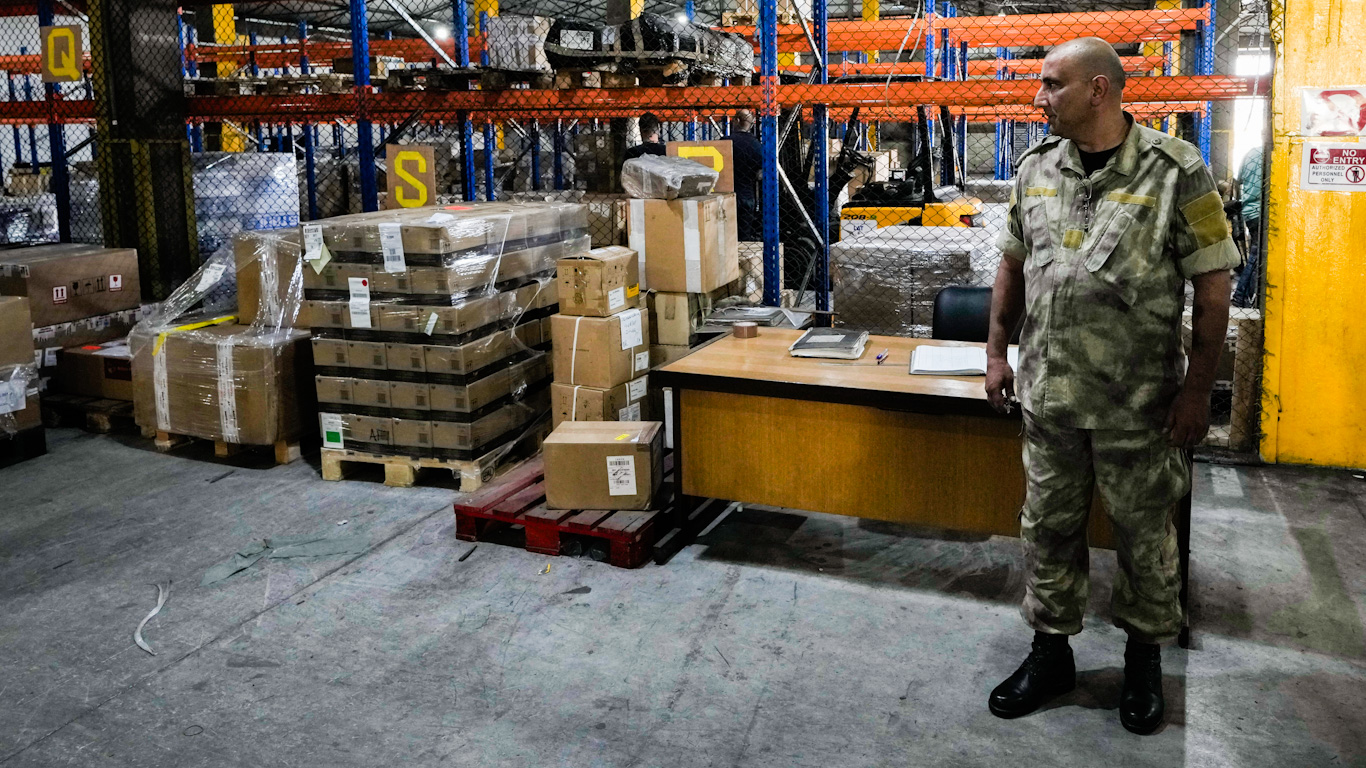On Sunday, The Telegraph published an article alleging that whistleblowers had informed them that Hezbollah was storing a range of missiles and explosives at the Rafik Hariri International Airport in Beirut, Lebanon. The report attempted to link this claim to the catastrophic Beirut Port explosion in 2020.
However, the British media outlet has since retracted the original article and replaced it with another piece that covers Lebanese refutations of the allegations.
An article published by The Telegraph, claiming it had acquired knowledge from unnamed sources about the presence of Iranian-made weapons being stored at Beirut’s International Airport, has triggered a lawsuit from Lebanon against the British media outlet.
Immediately after the report was issued, the Lebanese Air Transport Union released a statement labeling the allegations as “mere illusions and lies aimed at endangering Beirut Airport and its civilian workers, as well as travelers to and from it, all of whom are civilians.”
Although The Telegraph has not retracted its report, the backlash has forced the media outlet to remove the original article and publish an updated piece. The original article’s headline read, “Hezbollah stores missiles and explosives at Lebanon’s main airport, whistleblowers claim.” The new headline and story, published under the same link, now reads, “Beirut airport bosses deny it is being used to store Hezbollah weapons.”
The original piece quotes unnamed sources, allegedly workers at the Beirut airport, who claimed to have witnessed “unusually big boxes” and an increased presence of high-ranking Hezbollah officials. The Telegraph further claimed that “Iranian-made Falaq unguided artillery rockets, Fateh-110 short-range missiles, road-mobile ballistic missiles, and M-600 missiles” were being stored at the airport. This was in addition to “AT-14 Kornet, laser-guided anti-tank guided missiles (ATGM), huge quantities of Burkan short-range ballistic missiles, and explosive RDX, a toxic white powder also known as cyclonite or hexagon.”
While the actual quotes from the unnamed whistleblowers only mention witnessing boxes, this raises questions about the source for the claim that “Hezbollah is storing huge quantities of Iranian weapons, missiles, and explosives.” The only named individual in the article is virulently anti-Hezbollah Lebanese MP Ghassan Hasbani, who belongs to the far-right Lebanese Forces Party.
Additionally, the article quotes the Israeli military, stating that “Hezbollah’s strategy to hide weapons and operate from civilian neighborhoods stems from its intentions to draw the IDF to target these civilian areas in times of escalation.”
If the missiles and explosives mentioned in the article were indeed being stored in large quantities at the airport, there would surely be trace evidence, and only an insider would know the specific types of weapons. In response to these claims, Lebanon provided an open tour for foreign diplomats and international media to visit Beirut airport, aiming to dispel the allegations.
This is not the first time such allegations have been leveled against Hezbollah regarding the storage of weapons in and around the airport. In 2018, then-Lebanese Foreign Minister Gibran Bassil organized a televised briefing for 73 foreign envoys and led an open tour for them to inspect the airport sites that Israeli Prime Minister Benjamin Netanyahu had claimed were being used by Hezbollah to store weapons.
In 2020, Israel again claimed that weapons were being stored near Beirut International Airport, prompting yet another media tour to refute the claims. At that time, the Israeli military released specific details indicating where the alleged weapons facility was located, but when the media tour visited the area, they found nothing to corroborate these claims.
When it comes to Gaza, similar claims are frequently made regarding Palestinian armed groups and their use of civilian sites to store weapons and operate military bases. For instance, in July 2022, the Israeli military released images mapping out alleged Hamas military sites surrounding civilian areas. Reputable outlets like Reuters reported these claims.
In response to such accusations, Palestinian groups and their supporters often refute the allegations, arguing that these claims are part of a broader strategy to justify military actions and garner international support. The ongoing conflict continues to be marked by a war of narratives, with each side presenting its version of events to the global audience.
Israel has frequently targeted Palestinian civilian sites, justifying these actions by claiming Hamas operates there. A notable example is the Israeli invasion of Al-Shifa Hospital in Gaza City, the territory’s largest medical complex. Israel released CGI images depicting a multi-layered tunnel system under the hospital, alleging it housed Hamas Headquarters. This justification received backing from the U.S. government and support from Western corporate media. However, it was later proven that no such “Hamas HQ” existed. Subsequently, Israel shifted its military focus to Khan Younis, claiming it to be the “real Hamas headquarters,” which was also later disproven.
On October 16, before Israel’s large-scale decimation of schools and hospitals in Gaza, the BBC published an article titled “Does Hamas build tunnels under hospitals and schools?”, which helped bolster the Israeli military’s claims. Similar serious allegations about Lebanon could have equally catastrophic repercussions if Western media justifies bombing civilian areas. The Gaza Strip serves as a grim precedent, where around 50,000 Palestinians have been killed or are missing and presumed dead following such justifications.
Feature photo | A Lebanese customs officer stands guard during a tour for journalists and diplomats at the Rafik Hariri International Airport in Beirut, Lebanon, June 24, 2024. Bilal Hussein | AP
Robert Inlakesh is a political analyst, journalist and documentary filmmaker currently based in London, UK. He has reported from and lived in the occupied Palestinian territories and hosts the show ‘Palestine Files’. Director of ‘Steal of the Century: Trump’s Palestine-Israel Catastrophe’. Follow him on Twitter @falasteen47


